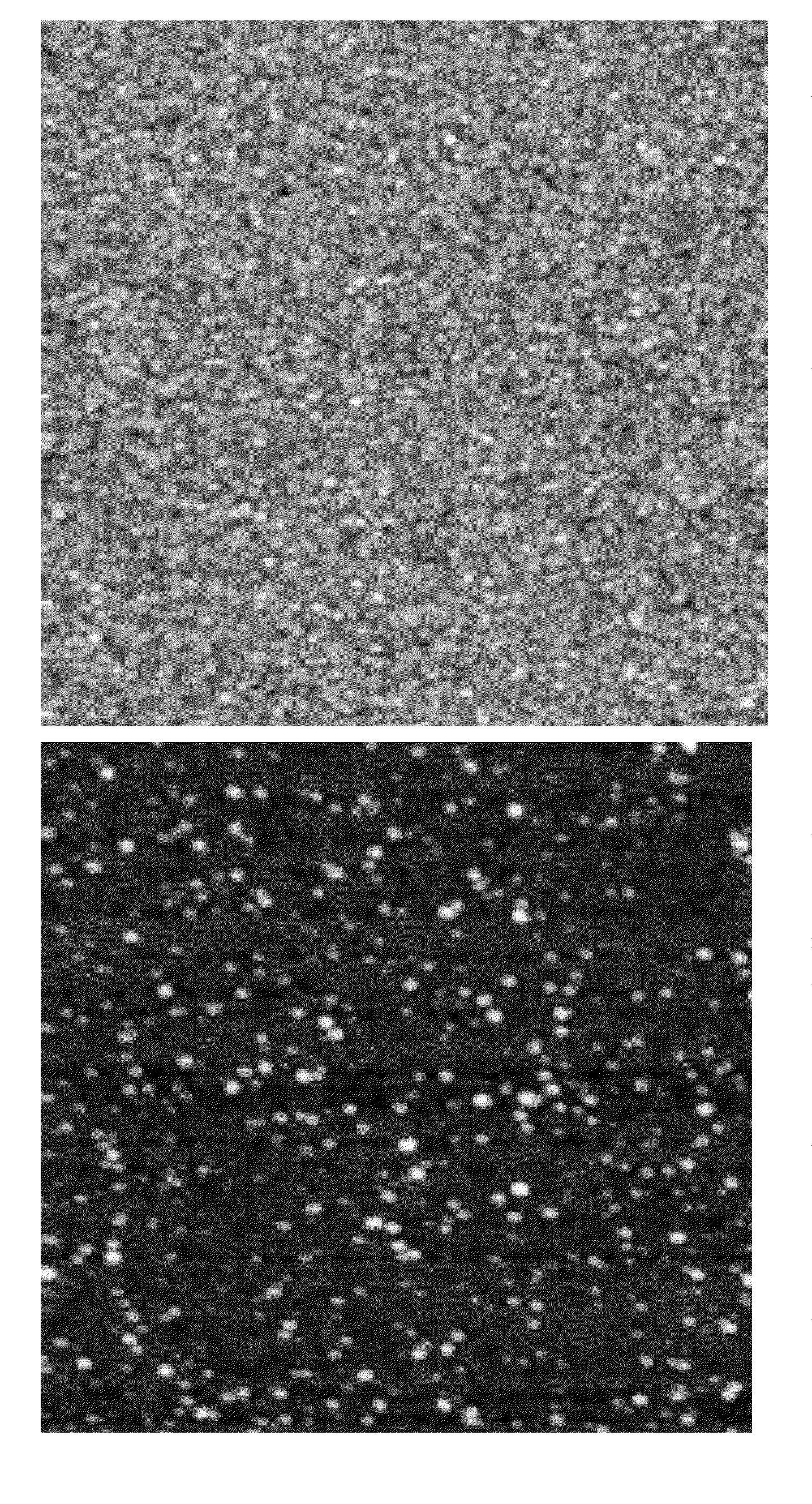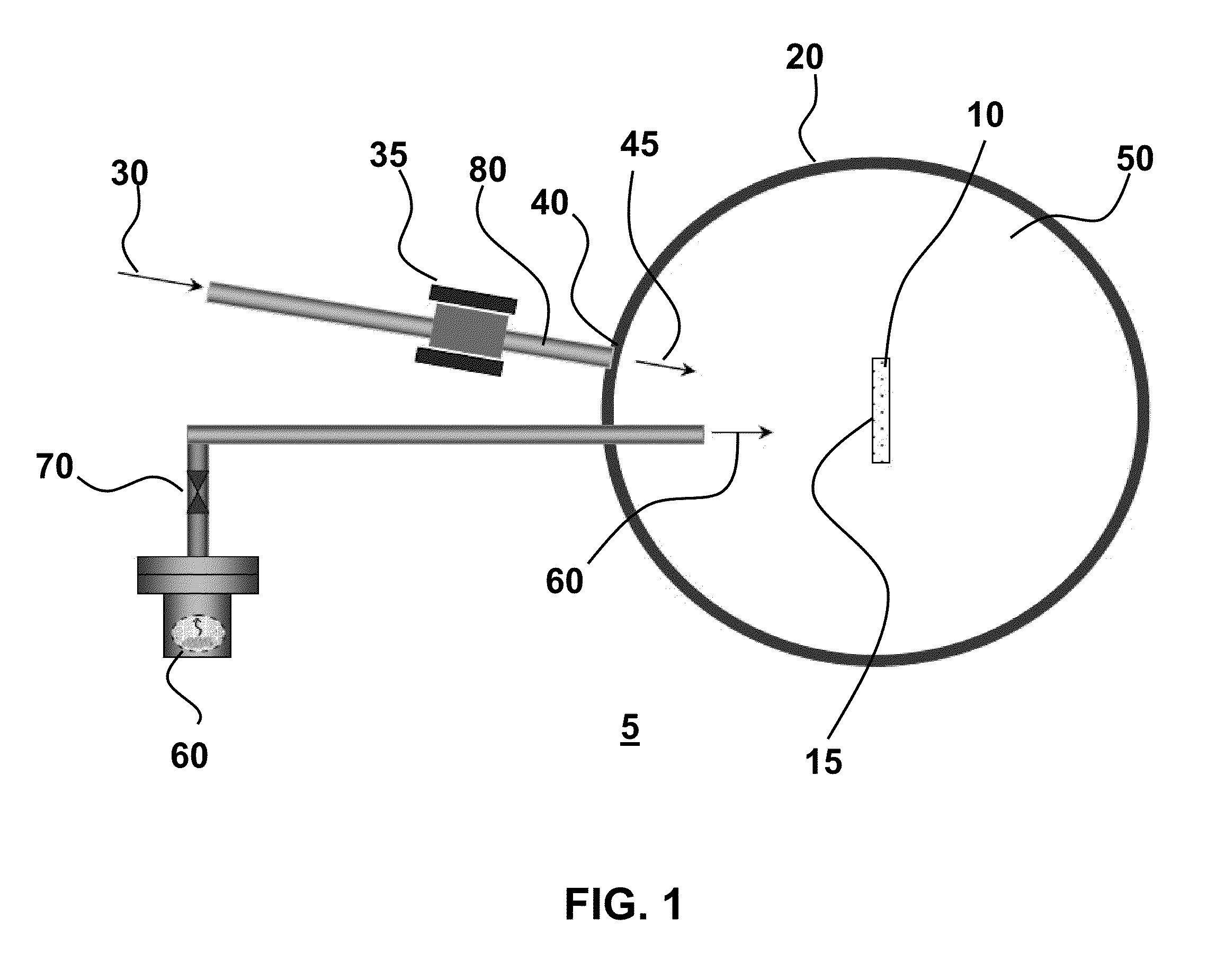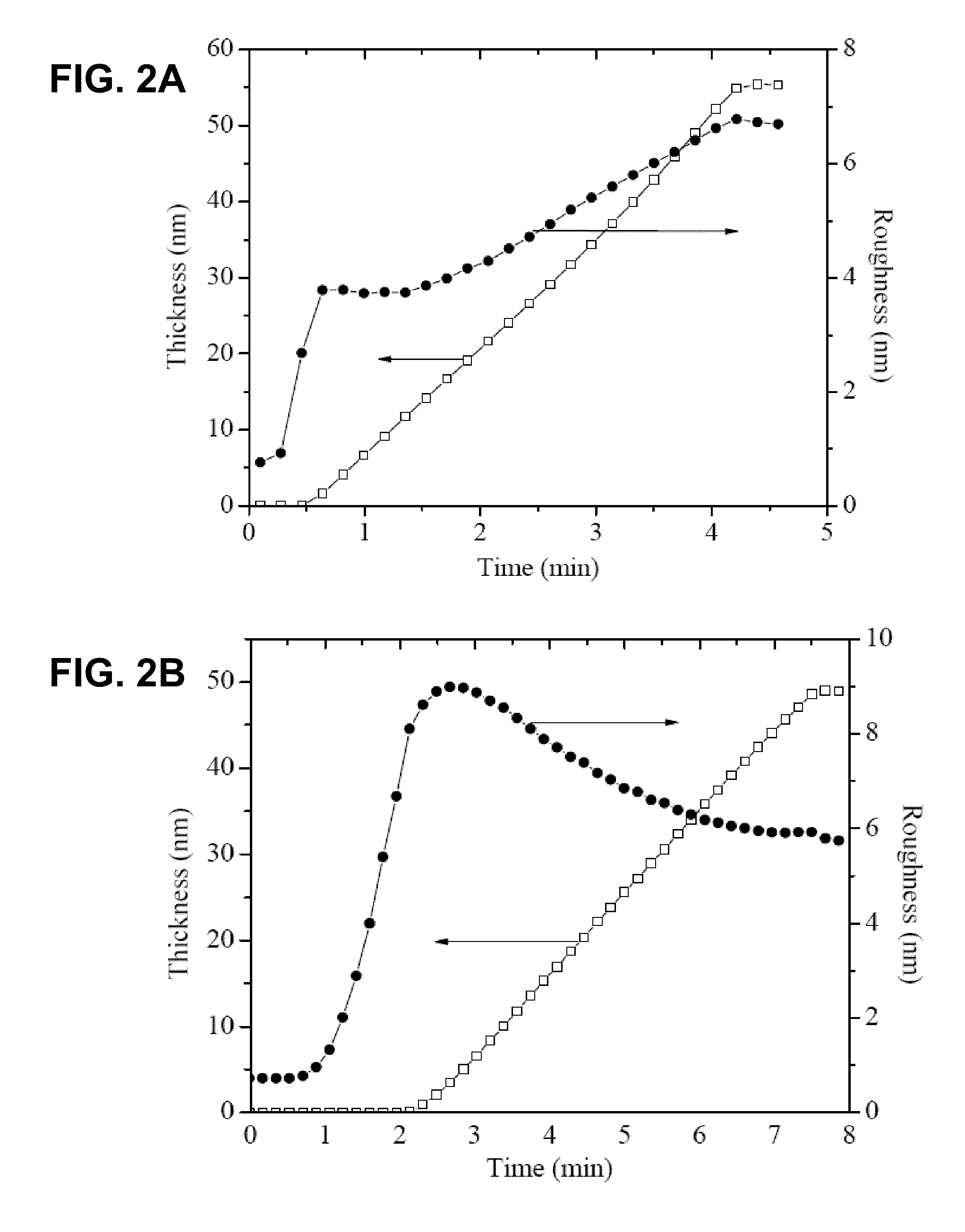Surface Preparation for Thin Film Growth by Enhanced Nucleation
a technology of enhanced nucleation and surface preparation, which is applied in the field of material deposition, can solve problems such as difficult nucleation, and achieve the effects of superior film growth, enhanced nucleation, and low energy
- Summary
- Abstract
- Description
- Claims
- Application Information
AI Technical Summary
Benefits of technology
Problems solved by technology
Method used
Image
Examples
example 1
Schematic and Overview of Enhanced Nucleation
[0055]FIG. 1 is the schematic of a high vacuum reactor 5 used to generate high-quality thin films. The substrate 10 used in this example is silicon; prior to loading in chamber 20, it is dipped in dilute HF acid and rinsed with deionized water to passivate the surface by terminating the silicon bonds with hydrogen. This substrate 10 is then introduced via a load-lock into the reactor or chamber 20, which has been pumped to a base pressure of 10−8 Torr. The substrate is aligned with respect to a spectroscopic ellipsometer to observe changes in the optical properties of the film-on-substrate system during treatment and during film growth. The substrate is heated radiatively to 275° C. The ellipsometer data acquisition is turned on.
[0056]In a first set of experiments, Argon gas 30 flows into the chamber 20 through the remote plasma cavity orifice 40 downstream of the remote plasma generator 35. Conduit 80, such as a glass tube, conveys plasm...
example 2
Nucleation Enhancement During Thin Film Deposition
[0063]The requirement for ultra thin films in microelectronics and other applications in nanotechnology has made nucleation one of the primary focuses in thin film deposition.1 Dense nucleation and fast coalescence enables deposition of pinhole free ultra-thin smooth film. In CVD and ALD, two commonly used techniques for thin film deposition, nuclei are formed in selected sites on the substrate surface after which they grow and coalesce.2,3 With fewer of these nucleation sites, corresponding island sizes are larger and the time for fully-coalesced films increases. In such situations it is almost inevitable to get high roughness values with higher thicknesses before a fully coalesced film is formed. It is therefore imperative to have high nucleation density on the substrate surface, to grow fully coalesced ultra-thin films with low roughness values. Prior techniques of nucleation enhancement have been system (substrate, precursor) spe...
PUM
| Property | Measurement | Unit |
|---|---|---|
| Time | aaaaa | aaaaa |
| Thickness | aaaaa | aaaaa |
| Energy | aaaaa | aaaaa |
Abstract
Description
Claims
Application Information
 Login to View More
Login to View More - R&D
- Intellectual Property
- Life Sciences
- Materials
- Tech Scout
- Unparalleled Data Quality
- Higher Quality Content
- 60% Fewer Hallucinations
Browse by: Latest US Patents, China's latest patents, Technical Efficacy Thesaurus, Application Domain, Technology Topic, Popular Technical Reports.
© 2025 PatSnap. All rights reserved.Legal|Privacy policy|Modern Slavery Act Transparency Statement|Sitemap|About US| Contact US: help@patsnap.com



